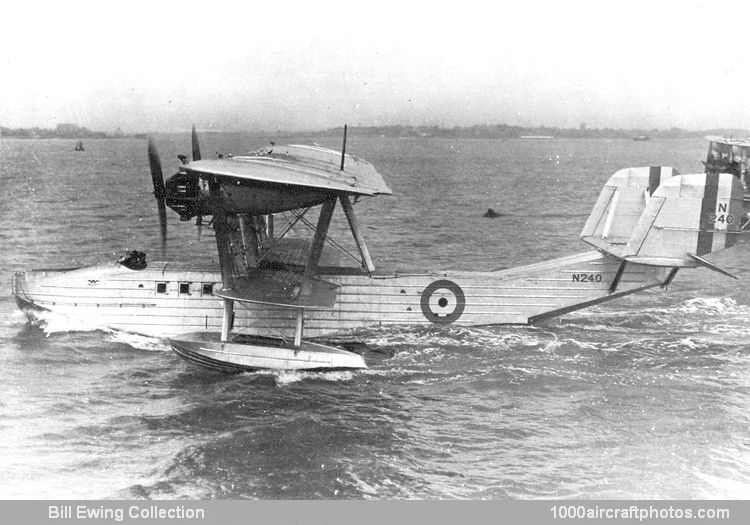08/31/2014. Remarks by Johan Visschedijk: "The successful trials of the Saunders-hulled A.14 Southampton in 1928 encouraged the company to design and build a flying boat utilising a hull of similar construction. The result was the A.7 Severn of 1930, an all-metal machine with fabric covered flight surfaces. The hull, almost identical to the A.14 and employing the same system of longitudinal corrugation of the sides and planing bottom to obviate the need for internal stringers, had gunners' cockpits in the bows, amidships, and in the stern, while the two pilots were positioned side-by-side in an open cockpit forward of the mainplanes.
A triple power unit layout was chosen, a policy dictated largely by the 500-600 hp developed by available units of the time, and the Severn was fitted with the three 485 hp Bristol Jupiter IX engines. These were arranged as tractors, uncowled, and driving two-bladed propellers, with a gravity-feed fuel supply from large tanks embodied in the upper mainplane center section.
A distinctive feature of the Severn was the short span of the lower wing, which had the appearance of being a supporting member for engine and interplane struts and wing tip floats. The tail unit consisted of a strut-braced monoplane horizontal surface with twin fins and rudders, the latter fitted with servo surfaces carried on outriggers. Only one machine was built, serialed N240, and under test proved to have a maximum speed of 130 mph (209 kmh) at a loaded weight of 22,000 lb (9,979 kg), an outstanding performance for the period.
The lack of a production order was probably due to the large production of the Southampton, but Saunders-Roe continued development of the Severn and in 1934 produced the A.27 London, which retained most of the basic features of the Severn, including the hull construction. The Severn made one notable flight during its career; this was in 1931, when it partnered the Singapore II on a cruise from Felixstowe to the Middle East and back, covering a distance of 6,530 mls (10,509 km) without mishap."
